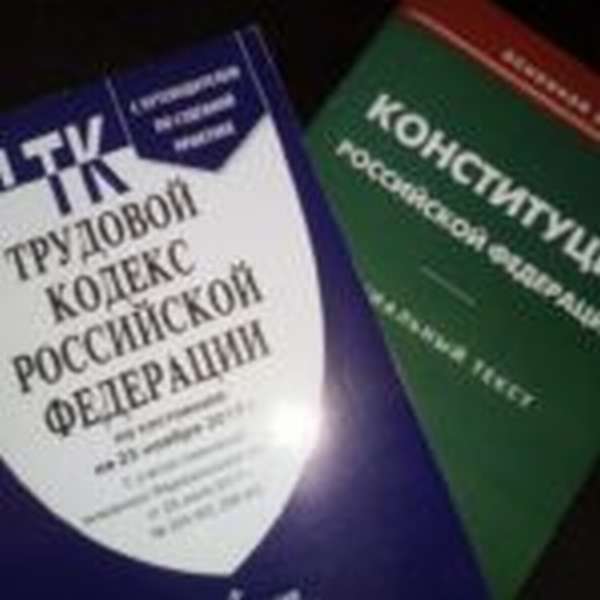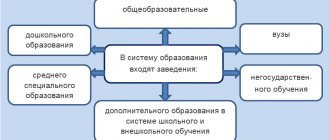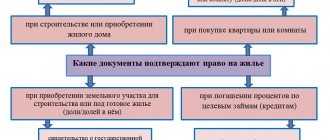Is personal income tax withheld from severance pay?
Personal income tax applies to severance pay with restrictions. The order is related to the category of this payment. The law classifies it as compensation, which is regulated by federal and local laws, as well as regulations of constituent entities of the Russian Federation.
Note! When an employer, dismissing an employee, pays him additional money based on the results of the production period, such payment is not considered compensation.
The peculiarity of taxation is the following: personal income tax is applied not to the full amount of the calculated benefit, but to the share that goes beyond three times the calculated average amount of wages. The procedure was introduced in paragraph 3 of Art. 217 Tax Code of the Russian Federation. For those living in the Far North, the amount of six times the income received is considered.
Dismissal benefits are paid in the following situations:
- the employment contract was terminated because it was concluded in violation of legal norms (parts 1 and 3 of article 84 of the Labor Code of the Russian Federation). It is important that the employee is not at fault, and that violation of the law makes further continuation of the employment relationship impossible,
- the citizen was dismissed because the organization was liquidated or it was necessary to reduce staff (Part 1 of Article 178 of the Labor Code of the Russian Federation),
- the employee was forced to leave his position due to military conscription (paragraph 3, part 3, article 178 of the Labor Code of the Russian Federation),
- the company moved to another location, and the employee refused to do the same, necessitating dismissal (paragraph 5, part 3, article 178 of the Labor Code of the Russian Federation).
The law also allows the inclusion of additional grounds and payments for dismissed employees in labor and collective agreements.
When filling out form 6-NDFL, you need to enter information about the amount of the dismissal benefit not in full, but only in part exceeding the amount indicated above (3 times or 6 times the average salary).
Watch the video. How to include severance pay in expenses when dismissing an employee:
The amounts of severance pay upon termination of an employment contract, established by the Labor Code of the Russian Federation:
| Grounds for dismissal | Amount of severance pay | Article of the Labor Code of the Russian Federation |
| Liquidation of an organization or reduction in the number or staff of an organization's employees | Average monthly earnings (Note: the average monthly salary can also be paid to the employee during the period of his employment, but this period should not exceed two months (including severance pay). Average earnings can be paid, as an exception, for the third month of employment if the employee was not employed by the employment service). | Art. 178 Labor Code of the Russian Federation |
| Liquidation of an organization / reduction in the number or staff of workers engaged in seasonal work | Two-week average earnings | Art. 296 Labor Code of the Russian Federation |
| Liquidation of an organization / reduction in the number or staff of employees who leave organizations located in the Far North and equivalent areas | Average monthly earnings. (Note: the average monthly salary can also be paid to the employee during the period of his employment, but this period should not exceed three months from the date of dismissal (including severance pay). During the 4th, 5th and 6th months, the average salary can be paid, according to the decision of the employment service, if the employee was not employed). | Art. 318 Labor Code of the Russian Federation |
| The employee’s refusal to transfer to another job that is necessary for him for medical reasons, or the employer’s lack of such work | Two-week average earnings | Art. 178 Labor Code of the Russian Federation |
| Conscription of an employee to military service/alternative civilian service | ||
| Reinstatement of an employee who previously performed this work | ||
| Refusal of an employee to be transferred to another location together with the employer | ||
| Recognition of an employee as completely incapable of working for medical reasons | ||
| Refusal of an employee to work in the event of a change in the terms of the concluded employment contract | ||
| Violation of the rules for concluding an employment contract, which were committed through no fault of the employee | Average monthly earnings | Art. 84 Labor Code of the Russian Federation |
| Dismissal of managers, their deputies and chief accountants in the event of a change in the owner of the organization’s property | Minimum - three average monthly earnings | Art. 181 Labor Code of the Russian Federation |
| For heads of organizations: Termination of an employment contract by decision of the authorized body or property owner | Minimum - three average monthly earnings | Art. 279 Labor Code of the Russian Federation |
A collective or employment agreement may provide for additional severance payments on other grounds, and may also establish amounts that exceed those established at the legislative level.
Often in organizations, in the event of dismissal of employees, severance pay is provided by agreement of the parties.
Since the amount of such a benefit is not determined by law, the organization has the right to independently determine its amount and payment procedure.
Most often, collective agreements stipulate not a specific amount, but an interval from the minimum to the maximum payment.
For example, a clause of a collective agreement may read: “In the event of dismissal of an employee by agreement of the parties (in accordance with paragraph 1 of Article 71 of the Labor Code of the Russian Federation), such employee is entitled to severance pay in the amount of three to six of his official salaries.
The specific amount of such severance pay is established when concluding a dismissal agreement between the employer and employee.”
Severance pay not established by law must be specified in a collective or employment agreement; you can also enter into an additional agreement on the payment of severance pay, which will be an integral part of the employment contract.
You may be interested in the mental map “Concluding an employment contract”, which describes in detail what is the basis for hiring
Or find out HERE on what grounds an employer can terminate an employment relationship with an employee
If you are dismissed due to disability
Article 217 establishes restrictions on the application of personal income tax to severance pay amounts. One of them is provided separately for cases of termination of employment relations due to the occurrence of an employee’s disability.
Upon dismissal on this basis, the payment is not subject to income tax if it does not exceed three times the average monthly salary. For those living in the Far North, the starting point is the average salary for 6 months. The procedure is similar to that applied for dismissal for other reasons.
Severance pay upon dismissal due to reduction.
If a soldier is fired
When dismissing persons in military service, the rules of paragraph 3 of Art. 217 Tax Code of the Russian Federation.
To find out what amounts military personnel receive, you need to familiarize yourself with additional legal regulations. One of them is Part 4 of Article 23 of the Federal Law On the Status of Military Personnel dated May 27, 1998 N 76-FZ.
The Decree of the Government of the Russian Federation of September 22, 1993 N 941 also applies. The benefit is paid throughout the year, it corresponds to the average monthly salary. Since the average salary is not exceeded, personal income tax is not applied here.
In addition to these guarantees, the law gives a discharged serviceman the right to receive a double cash benefit once. Depending on the service life, this amount may be revised. For more than 20 years of service, seven times the amount of compensation is applied. The salary amount is also added if the person has special merits, for example, state awards.
Typically, as a result of such a calculation, the amount turns out to be more than the average earnings for 3 months, so the difference is considered as a personal income tax item in the amount of 13%.
How are severance payments not specified in the Labor Code of the Russian Federation taxed?
Sometimes an accountant may doubt what category to include the amounts received by a dismissed citizen. The questions most often concern citizens leaving work for retirement. It is also difficult when the parties terminate the contract by mutual voluntary agreement.
Attention! Our qualified lawyers will assist you free of charge and around the clock on any issues. Find out more here.
Paragraph 1 clause 3 art. 217 of the Tax Code of the Russian Federation prescribes that one should be guided by the previously listed restrictions in the application of personal income tax in relation to cash payments introduced by laws at any level.
Part 4 art. 178 of the Labor Code of the Russian Federation makes it possible to provide outgoing employees with additional benefits, provided that the basis is fixed in an agreement previously signed by the parties (a local collective act of the organization).
Exactly the same procedure applies to these payments as to those listed in Art. 217 Tax Code of the Russian Federation. Their status is equal to that established by law.

Committee for the Protection of Workers' Rights: reasons for appeal.
How to calculate average earnings during a layoff, read here.
Can a pensioner join the labor exchange, read the link: https://novocom.org/trudovoe-pravo/mozhno-li-vstat-na-birzhu-truda-pensioneru-i-chto-eto-daet.html
Important! If the reason for the severance of the employment relationship is a mutual agreement, the payment of benefits to the dismissed person may be provided for in a separate document (additional agreement), which will become a mandatory component of the employment contract (Article 57 of the Labor Code of the Russian Federation).
Clause 3 art. 217 of the Tax Code of the Russian Federation, which requires calculating the difference between the limit and the allowance to calculate the tax, applies to dismissal for any reason. This provision is enshrined in letter No. BS-4-11/9933 of the Federal Tax Service of Russia dated May 25, 2017.
Taking into account this procedure, when a citizen retires or reaches an agreement with the employer to end the employment relationship, personal income tax is applied only to the difference with the established limit.
Additionally, it is recommended to study the letters of the Ministry of Finance of the Russian Federation dated February 12, 2018 No. 03-04-06/8420, dated February 28, 2017 No. 03-04-06/11087 and the Federal Tax Service of the Russian Federation dated May 25, 2017 No. BS-4-11/9933. This issue was also considered by the Supreme Court of the Russian Federation (ruling dated June 16, 2017 No. 307-KG16-19781).
So, regardless of the reasons for leaving work, a benefit that does not exceed three salaries (for the North - six salaries) is not subject to taxation.
If the amount is greater, personal income tax will be charged only on the excess amount.
When dismissing, it is important to ensure that deadlines are met. An employer, when paying severance pay to an employee, is obliged to withhold tax from him. The next stage is its transfer to the budget. This must happen no later than the day following the actual payment (clauses 4, 6 of Article 226 of the Tax Code of the Russian Federation).
Payments upon dismissal by agreement of the parties.
Additional severance pay: to be or not to be
Initially, the courts, in most cases, took the position that the parties had to fulfill their obligations and recovered from the employer the funds not paid voluntarily, the amount of which was specified in the agreement on termination of the employment contract with the employee. The Supreme Court of the Russian Federation noted that labor legislation does not contain a prohibition on establishing directly in an individual employment contract or an additional agreement to it conditions for the payment of severance pay in an increased amount, therefore, enshrining this condition in local regulations is not required. The court referred to the Constitution of the Russian Federation, according to which labor is free, and everyone has the right to freely dispose of their abilities to work and choose their type of activity and profession (Part 1 of Article 37 of the Constitution of the Russian Federation). Freedom of labor in the sphere of labor relations is manifested, first of all, in the contractual nature of labor, in the freedom of the employment contract. Freedom of labor also presupposes the possibility of terminating an employment contract by agreement of its parties, that is, on the basis of the voluntary and agreed expression of will of the employee and the employer. Such legal regulation is aimed at ensuring a balance of interests of the parties. At the same time, since the expression of the will of the worker is aimed at dismissal by agreement of the parties precisely on certain conditions, the employer does not have the right, at his own discretion, to decide the issue of the conditions for the dismissal of the employee (see the rulings of the Supreme Court of the Russian Federation dated December 6, 2013 No. 5-KG13-125, dated May 24 .2013 No. 5-KG13-48, dated 09.14.2012 No. 45-KG12-6).
The conclusion of the Supreme Court of the Russian Federation in judicial acts of past years on the procedure for issuing additional severance pay is interesting. It was noted that fixation of monetary payments can only be made in an agreement on termination of the employment contract. An agreement on the termination of employment relations, concluded during the period of validity of the employment contract, is an act containing the norms of labor law, and by virtue of Art. 11 of the Labor Code of the Russian Federation, all employers in labor and other directly related relations with employees are obliged to be guided by the provisions of labor legislation and other acts containing labor law norms (see the determination of the Supreme Court of the Russian Federation dated May 17, 2013 No. 14-KG13-2).
Thus, at that time, the highest court took the side of the workers. The court did not allow the possibility of violation by one of the parties of its obligations. At the same time, the amount of severance pay fixed in the agreement of the parties did not matter for the very fact of collection. It didn’t matter what document these payments were in.
But practice gradually changed, and already in 2014, the Supreme Court of the Russian Federation issued a ruling in which it recognized the benefit in the amount of 12 salaries as not meeting the principle of proportionality, reasonableness and validity. He pointed out the parties’ abuse of rights, since the payment is not provided for by the defendant’s remuneration system and there are no grounds for providing the plaintiff with significant advantages over other employees.
Is it necessary to withhold personal income tax from severance pay in a fixed amount?
Sometimes the parties to an employment contract consider it appropriate to separately stipulate the conditions for its termination, including the amount of benefits. The employer and employee have the right to set it in a fixed amount. In this case, the normal procedure described above applies. Tax is charged only on the difference between the payment and three months' salary.
The fixed payment upon dismissal deserves attention in connection with questions regarding its classification as a cost item.
According to paragraph 9 of Art. 255 of the Tax Code of the Russian Federation, benefits that were provided for in advance by the section of the employment contract are included in the expenses aimed at paying labor. This has its limitations.
P. 14 of the Review of Judicial Practice of the Supreme Court of the Russian Federation No. 4 (2016), approved. by the Presidium of the Supreme Court of the Russian Federation on December 20, 2016, provides for specifics.
The employer should assess the amount of benefits to be paid. It must be compared with the usually used amount of such payment (3 or 6 times the average monthly salary). If the difference turns out to be significant, it must be justified.
The reason for the large amount of the benefit may be a long period of work in the organization, the employee’s achievements, and his contribution to the economic growth of the enterprise.
If the tax authority considers such a payment to be unjustified, it may be classified as personal security expenses. In this case, the amount of expenses will not affect the size of the taxable base when calculating income tax.
These points were examined in detail by the Supreme Court of the Russian Federation when considering cases No. A40-171348/2016, A40-213762/2014, A40-94960/2015 (rulings dated 02.20.2018 No. 305-KG17-15790, dated 03.27.2017 No. 305-KG16 -18369, dated September 23, 2016 No. 305-KG16-5939, respectively).
Personal income tax on severance pay: how to calculate
The amount of personal income tax is calculated quite easily: the amount of the taxable base is multiplied by the tax rate. If different types of income are subject to calculation at their own rates, each accrual is made separately, then the products are summed up.
Note! Upon dismissal, the calculation of income tax is simple; it will be 13% of the difference between the benefit and three times (for the North - six times) the salary taken.
This provision is more understandable when applied in practice. Let's consider the situation. In Krasnodar, the company is reducing staff. As a result, the main manager Vasnetsova N.N. resigns.
When formalizing the employment relationship, the parties included in the document a clause according to which upon dismissal it was planned to pay a benefit of 150,000 rubles. Vasnetsova N.N.’s salary based on the last year averages 35,000 rubles.
Let's calculate the tax-free amount of income: 35,000 × 3 = 105,000 rubles.
The difference between it and the amount to be paid is 150,000 - 105,000 rubles. = 45,000 rub.
This amount becomes the basis for calculating personal income tax. The calculation is as follows: 45,000 × 13% = 5,850 rubles.
Since the tax is withheld by the employer, the severance pay will be reduced by this amount.
150,000 – 5850 = 144,150 rubles.
When paying benefits, the employer deducts the amount of tax from it. It must be transferred to the budget no later than the next working day. For the absolute majority of subjects of the Federation, the above calculation is a sample.
The exception is places classified as the territory of the Far North. There, to calculate the tax-free payment, not three months, but six months of the citizen’s salary based on the past year is used.
Further actions are similar to those described.
Deadline for paying taxes upon dismissal
In standard situations, the final payment is made directly on the employee’s last day of work in the organization. If the employee comes for documents and his earned money later than the date of dismissal, then the payment is made no later than the next day.
Salaries are transferred to employees at the end of the month. However, the date of dismissal does not always coincide with this time. In this case, the accountant is obliged to transfer the withheld funds to the Federal Tax Service no later than the next working day following the employee’s last day of work.
Who is obliged to calculate, withhold and pay personal income tax?
Important! Art. 226 of the Tax Code of the Russian Federation names the following categories of persons as tax agents obligated to calculate the personal income tax of employees and transfer it to the budget:
- legal entities created and operating in accordance with Russian legislation,
- citizens who have received the status of individual entrepreneurs. This category also pays tax for itself if required by law,
- notaries with private practice,
- lawyers conducting individual activities. Their work is carried out in the form of a lawyer’s office or legal consultation,
- branches and other branches of foreign companies located in Russia.
The employer acts as a tax agent, obligated by law to calculate the amount of tax on employee income and withhold it. The employee himself is exempt from this need.
Deduction algorithm
Transferring tax to the Federal Tax Service account upon dismissal is the responsibility of the employer. The procedure for the final calculation and deduction of income tax from an employee’s earnings is regulated by the provisions of Article 140 of the Labor Code.
The retention procedure consists of three main stages:
- Calculation of the fee amount.
- Withholding funds from income accrued to a resigning employee.
- Transfer of withheld money to the tax office.
In addition, the responsibilities of the organization’s management also include drawing up and filing a tax return at the end of the billing period, which is the calendar year. It is drawn up according to the unified form 3-NDFL.
The algorithm for calculating the fee to be transferred is quite simple. Calculations are carried out using the following formula:
Total income that is taxed * 13%
The resulting result is the amount that will be withheld from the employee's earnings as an income tax levy.
ATTENTION! For persons who have citizenship of other states, but carry out official labor activities on the territory of the Russian Federation, a different income tax rate is established. It is equal to 30% of the income received.
Severance pay in certificate 2-NDFL
2-NDFL certificates for free in word format
Please note! When dismissing an employee, on the final day of his employment, the employer is obliged to issue and hand over two types of income certificates to him:
- on wages for calculating payments in connection with temporary disability, pregnancy and childbirth, child care,
- according to form 2-NDFL for a given year. The employer will need to submit the same certificate to the tax authority when the year ends.
Only taxable payments appear in the 2-NDFL certificate. If the amount of severance pay exceeds the non-taxable amount, section 3 is provided to indicate the amount of the difference. Section 5 is intended for the amount of tax.
According to Order of the Federal Tax Service of the Russian Federation dated October 24, 2017 No. ММВ-7-11/820, in the 2-NDFL form, each category of income is assigned its own code.
The table below lists the most common codes:
| Name of payment | Assigned code |
| Salary | 2000 |
| Compensation for remaining vacation days | 2012 |
| Premium payment | 2002 |
| Amount of taxable income | 2013 |
Responsibility for tax evasion
Important! If a tax agent does not properly fulfill the duties assigned to him by law, the tax authority applies sanctions in the form of fines in the following amounts:
| Type of violation | Type of sanction | Legal norm-basis |
| Failure to comply with the obligation to withhold tax or transfer it to the budget | Fine – 20% of the amount not received into the budget | Art. 123 Tax Code of the Russian Federation |
| Failure to comply with the obligation to withhold tax or transfer it to the budget in large amounts |
|
How to file a claim for severance pay?
Insurance premiums
As already mentioned, when terminating an employment contract by agreement with a citizen, the employer must charge personal income tax based on the difference between the benefit and 3 times the employee’s average salary. For the territories of the Far North - based on the same calculation using 6 times the salary.
On February 16, 2021, the Supreme Court of the Russian Federation issued Review No. 1. Clause 34 of this regulatory act abolished the accrual of insurance premiums for payments upon termination of employment relations by mutual agreement of the parties or accruals under the terms of a document previously signed by the parties.
The same limitation is established for payments related to a citizen’s injury or other harm to health. The procedure is regulated by sub. 2 p. 1 art. 20.2 of the Federal Law of July 24, 1998 No. 125-FZ “On compulsory social insurance against industrial accidents and occupational diseases.”
Watch the video. New procedure for accounting for expenses and taxation when calculating severance pay:
The procedure for calculating insurance premiums upon dismissal
When deciding what taxes to pay when dismissing an employee, you should not forget about insurance premiums, as well as contributions in connection with accidents at work. The composition of payments subject to taxation includes almost all accruals under an employment or civil law contract. The list of non-taxable amounts is clearly stated in Art. 422 of the Tax Code of the Russian Federation.
The procedure for determining the taxable base for contributions upon dismissal is as follows:
- Accounting for all amounts due to the employee in connection with termination of cooperation.
- Identification in the list of charges that fall under those given in Art. 422 of the Tax Code of the Russian Federation, benefits.
- Deduction from the total amount of accruals of non-taxable amounts - according to Art. 422 of the Tax Code of the Russian Federation.
The calculation of the amount of contributions upon dismissal is carried out according to the formula:
Taxable base × Percentage of contributions to the relevant fund |








